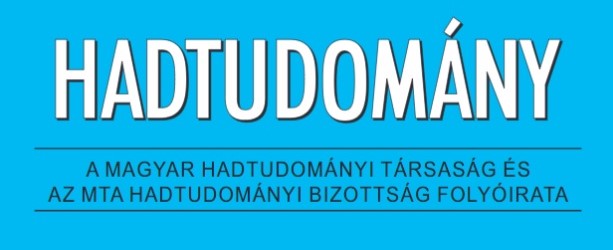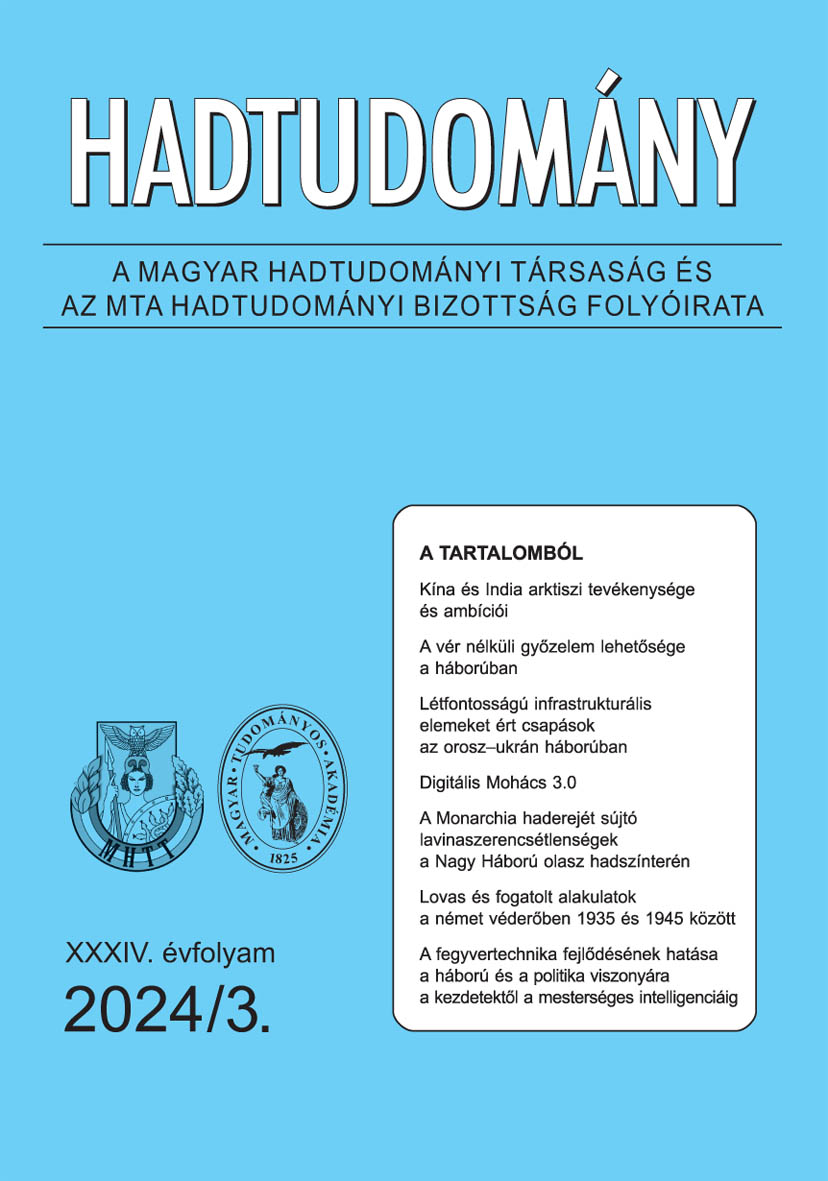Digitális Mohács 3.0
Absztrakt
Mennyire kitett Magyarország egy kibertéri műveletnek? Vajon egy másik nemzetállambékeidőben is indíthat ilyen műveletet Magyarország ellen? Ezek a kérdések jólmutatják a kiberbiztonsági kihívások fokozódását, melyekre a szakértőknek a nyilvánosságelőtt is válaszokat kell adniuk. Nem véletlen, hogy ezek a kérdések felmerülnek,hiszen évtizedek óta tapasztaljuk, hogy társadalmunk és gazdaságunk egyre jobbanfügg a digitális ökoszisztémától, miközben a nagyhatalmi vetélkedés egyik fókuszpontjaépp az információs infrastruktúrán van. A 2020-as években a mesterséges intelligenciaés a digitális ökoszisztéma gyors fejlődése, valamint a biztonságpolitikaikihívások (például orosz–ukrán háború) alapvetően alakították át a kiberbiztonsághelyzetét. Néhány évvel a szerzők Digitális Mohács címmel megjelent kétrészes tanulmányaután ez a dolgozat a hazai kiberbiztonság főbb területeit és stratégiai fenyegetéseitelemzi, javaslatokat téve a kritikus infrastruktúrák védelmére és a nemzetikiberstratégia megerősítésére.
Hivatkozások
/2013. (III. 21.) Korm. határozat Magyarország Nemzeti Kiberbiztonsági Stratégiájáról biztonságára vonatkozó Stratégiájáról.
/2020. (IV. 21.) Korm. határozat Magyarország Nemzeti Biztonsági Stratégiájáról.
/2018. (XII. 28.) Korm. határozat Magyarország hálózati és információs rendszerek.
/2013. (XII. 17.) Korm. rendelet a Nemzeti Kiberbiztonsági Koordinációs Tanács, valamint
a Kiberbiztonsági Fórum és a kiberbiztonsági ágazati munkacsoportok létrehozásával, mûködtetésével kapcsolatos szabályokról, feladat- és hatáskörükrõl.
Belügyminisztérium 2024. BSR - Bûnügyi Statisztikai Rendszer. https://bsr.bm.hu/Document/Index
Bruce M., Lusthaus J., Kashyap R., Phair N., Varese F. 2024. Mapping the global geography of cybercrime with the World Cybercrime Index. PLoS ONE 19 (4): e0297312. https://doi.org/10.1371/journal.pone.0297312
Európai Parlament és a Tanács (EU) 2016/1148 irányelve (2016. július 6.) a hálózati és információs rendszerek biztonságának az egész Unióban egységesen magas szintjét biztosító intézkedésekrõl.
Európai Parlament és a Tanács (EU) 2022/2555 irányelve (2022. december 14.) az Unió egész területén egy
ségesen magas szintû kiberbiztonságot biztosító intézkedésekrõl, valamint a 910/2014/EU rendelet és az (EU) 2018/1972 irányelv módosításáról és az (EU) 2016/1148 irányelv hatályon kívül helyezésérõl.
Kim-McLeod, Riam 2024. Russia-Ukraine war: Telegram-based hacktivism in 2023. https://www.secalliance.com/blog/russia-ukraine-war-telegram-based-hacktivism-in-2023
Kovács László, Krasznay Csaba 2010. Digitális Mohács: Egy kibertámadási forgatókönyv Magyarországellen. Nemzet és Biztonság: Biztonságpolitikai Szemle, 2010 (1): 44–56.
Kovács László, Krasznay Csaba 2017. Digitális Mohács 2.0: kibertámadások és kibervédelem a szakértõk
szerint. Nemzet és Biztonság: Biztonságpolitikai Szemle, 2017 (1): 3–16.
Legárd Ildikó 2023. Információbiztonsági incidenstrendek a közigazgatásban. Nemzetbiztonsági Szemle, 11. (1): 78–107. https://doi.org/10.32561/nsz.2023.1.6
Magyar Nemzeti Bank 2022. A magyar pénzügyi szektor kiberfenyegetettségi térképe 2022. https://www.mnb.hu/letoltes/kiberfenyegetettsegi-terkep-2022.pdf
Nemzeti Adatvédelmi és Információszabadság Hatóság 2024.
A Nemzeti Adatvédelmi és Információszabadság Hatóság 2023. évi beszámolója. https://www.naih.hu/eves-beszamolok?download=908:naih-beszamolo-a-2023-evi-tevekenysegrol




